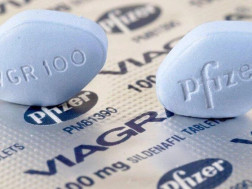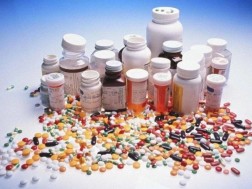One of the main promises of Irakli Gharibashvili before the Parliament that had granted him the mandate and the status of the Prime Minister of Georgia for the second term was to put special emphasis on the issue of regulating medicine prices and curb the over-profits of the medical companies.
On February 22 plenary session then still Prime Minister-to-be Gharibashvili assured the Chair of the Parliamentary Committee on Health and Social Issues to come back to the main legislative body with specific regulatory initiatives in the format of the working group. “I am interested if we can adopt EU rules on regulating medicine prices,” – Gharibashvili said.
In this Editor’s Note, I will try to address the issues with pricing and profits in this sector in figures.
Let me start with noting that today there is much more transparency in this sector in Georgia and saras.ge is a very good source of information on those companies that have opened up their financial data – so, today, the discourse on pricing and profits doesn’t have to be based only on perceptions. In the poor country with the Soviet past, it is very easy to manipulate the public perception that the rich business is the only one to be blamed for high prices.
Let me also underline that this review doesn’t have any ambition of the full research. However, since we haven’t seen any profound studies analyzing the structure of medicine prices and profits on the one hand and on the other – regulating prices and profit margins are politically very lucrative, and thirdly, we can confidently state that the 21st century is a century more of perceptions rather than facts – I have decided to share those facts and figures that I have found while working on this Editor’s Note.
Let us consider this as the opening of a discussion on medicine prices and profits in the Healthcare Sector. Yes, to some point, this is my personal view and approach, but I fully understand how sensitive this topic is – so, I would be glad if you challenge this Editor’s Note with a new perspective and with a very critical eye.
More so that the pharmaceutical companies that have made their figures publicly available – and these are PSP, Aversi, and Gepha – represent the largest companies on the market and comprise at least its 70% - so, we will have a quite representative picture to discuss.
Now based on these three largest players on the Georgian market, let me show the way the total revenue in this sector is distributed.

This pie chart above shows that the three main components have the highest contribution to the overall revenues – that is net cost; salaries and other benefits, and rent. What you also see on this chart is the Net profit in 2019 – and that is the latest data which is fully open to this day – which amounts to 5.6%, down from the previous year.
Let’s now put this figure into context. To be frank, the pharma business overall seems to lack transparency and openness globally. It was very hard to find the open data for comparisons. However, we still found some, and let me brief you about these companies before we continue with the analysis.
So, here they are:
Walgreens Boots Alliance (NASDAQ: WBA) - a global leader in retail and wholesale pharmacy, which is present in more than 25 countries; employs more than 450,000* people; has more than 21,000* stores in 11* countries, and has one of the largest global pharmaceutical wholesaler and distribution networks, with more than 425* distribution centers delivering to more than 250,000** pharmacies, doctors, health centers and hospitals each year in more than 20* countries.
Boots - UK’s leading pharmacy-led health and beauty retailer. With over 2,300 stores ranging from local community pharmacies to large destination health and beauty stores; part of the Retail Pharmacy International Division of Walgreens Boots Alliance, which is a global leader in pharmacy-led, health and wellbeing retail.
Superdrug Store – UK’s second largest pharmaceutical company with more than 830 pharmacies in UK and Irish Republic; with well-functioning online services.
Protek Group of Companies - one of the largest pharmaceutical companies in Russia, uniting three main brands: Riglas, Bud Zdorov and Jivika pharmacies.
A S Watson, Health and Beauty - the world’s largest international health and beauty retailer, with 12 retail brands; on 27 markets; more than 16 thousand online and offline stores in Asia and Europe. With this player, let me note that since not all the figures were available; we used this company only once, and also, we focused on its Western European markets for better comparisons.
Now, let us compare the net profits of Georgia’s three main players with those of American, British and Russian companies that have their data open (if interested we have all the sources to share with you).

What we see on this chart is that on the Georgian market net profit margins of the three largest players are closer to that of Super Drug Store, which is the highest in our sampling.
Let us now examine how this picture changes if we compare profit tax margins but this time before taxes and extra charges.

This chart clearly tells us that the tax system of Georgia seems to be one competitive advantage for the companies. Georgia practices a so called Estonian model of the profit tax – which means that reinvested profit is free of tax, which definitely eases the tax burden on the sector.
Let us now turn to extra charges, and here is the chart for details.
This chart seems very straightforward: From the consumers’ standpoint, these three largest players – Aversi, PSP and Gepha – do not seem to act dishonestly on the market.
What creates the problem then?
For the answer, we can turn to CURATIO International Foundation (CIF), a not-for-profit, non-governmental organization with 25 years of experience for better health systems. From the latest Georgian Healthcare System Barometer’s Wave XII, we will focus on this slide below.
Please, note the title of this slide – out-of-pocket payments. In 2019, more than half of the respondents of this research said that in the last 6 months, out-of-pocket payments at medical institutions have grown. Compared to wave IX, inconsequent waves XI-XII, the number of respondents mentioning this tendency of growth has staid consistent. One reason for this may be the changes that have been made to the design of the universal healthcare system in May 2017: Benefit packages for some groups have been differentiated at that point – some groups have been restricted from some services.
Let me note here that the targeted approach is what I believe to be more appropriate and rational for a relatively poor country like Georgia. It was clear from the very first steps of the universal healthcare reform in 2012 that the state budget of a developing country and its taxpayers wouldn’t have been able to sustain such a big burden on their shoulders. On the other hand – this chart also gives a clear indication that without a well-functioning private insurance system it is impossible to decrease the share of out-of-pocket payments in total costs on medicine and other medical services. What we can agree on at this stage to me is the fact that this tendency is a complex issue and unfortunately, the pharma industry alone is unable to solve it.
Now let us tie in all this information with the market structure that we have identified on the publicly available information at the beginning of this Editor’s Note. Here is this chart again, which shows that the net cost is central to the structure of revenues of this sector in Georgia.

One thing we all should remember here is that the largest share of medicine in Georgia is imported, which means that the analysis in this direction has to rely on two main components – regulatory burden and foreign exchange rate.
On the regulatory side: In 2009, changes have been made to the Law of Georgia on medicine and pharmaceutical activities. The most important change was to give more room for imports by introducing a market authorization policy and making parallel import of medicine available. These new changes granted companies the right to search for the cheapest medicine on the authorized markets in Europe and the US. It was enough for the medicine to be registered in any country that had been authorized by the Georgian government for imports. These changes proved to be successful back then – resulting in opening up the market for the new players and consequently, lower prices on medicine.
In 2020 new changes were made to the same law. The new edition of the Law reads: “A pharmaceutical product may be circulated on the territory of Georgia for five years after its registration, and after the expiry of the registration validity period - up to the expiry of the shelf life of the pharmaceutical product” and “After expiry of marketing authorization in Georgian, the circulation of a pharmaceutical product, except for its import, shall be admissible up to the expiry of the shelf life of pharmaceutical products already in circulation on the territory of Georgia”. This means that after the registration validity period expires, all the procedures must be renewed. One more change that has generated a debate on the side of the sector concerned the re-registration procedures.
The new edition of the Law reads: “During the registration procedure, the Agency shall decide to register or refuse to register a pharmaceutical product or a variation within three months in the case of registration of a Type-II variation, within two months - in the case of re-registration or registration and entry in the register of a pharmaceutical product, within 10 days - in the case of registration of a Type-IA variation, and within one month - in the case of registration of a Type IB variation, which shall be documented in an administrative act”. Without the industry’s reaction to these changes, the time-frames of the re-registration would have been even longer. Before these changes, the re-registration of medicine on the Georgian market took one week.
BM.GE has been following this topic very closely, and the industry back then consistently warned its consumers that due to these changes to the Law, companies might have turned away from the parallel imports of certain drugs or increase prices on certain types of medicine. Today, the volume of parallel imports is down 5 times – one factor here is definitely the pandemic; however, there is another factor as well we have to consider.
And that is the foreign exchange rate. Here we have a music visualization for you – while the music is definitely very pleasant, the tendency of the devaluation of the national currency - Lari that you are probably following right now - is quite unpleasant.
What this visualization means in practice is that if in 2018, the medicine you needed cost, say, 10 euro – in 2021, only because of the devaluation of the local currency, it already costs you 10 Lari more the least. The logic is the same as the trend in USD.
But what is the consumer perception of such changes in prices on medicine for the relatively poor population of Georgia whose purchasing power is so low that any such change – be it slight or significant – affects their budget severely?
For the answer, we will turn to CIF study again, and this time focus will be on medicine prices and perceptions related to it.

On the chart above we can clearly see that the majority of respondents of the study identify the increasing tendency in the medicine prices since 2015 (wave V of the research). This is the first year that the USD exchange rate stepped over the psychological benchmark and for the first time we saw 2 on the USD side of the equation.
Relying on your active feedback, let me share what this whole picture we have analyzed today tells me- its author: Healthcare policy which is oriented on the artificial downward pressure on medicine prices and through this, on the artificial decrease in profits of companies in this sector will be counterproductive, since neither prices on medicine, nor profit margins of the companies are the reason – both are the result.
More so, I strongly believe that opening up the pharma market even more and further simplifying parallel imports procedure would grant higher accessibility of the sector to the increased number of quality and cheap medicine, which then would help to decline prices on medicine on the market.
Europe is often taken as an example. America, too. However, despite the different degrees of regulation there, the array of medicine is very broad on both these markets. Besides, it seems logical to think that Georgia cannot copy the regulatory burden that is appropriate for the developed country and its well-developed sector.
So, do I like the high prices of medicine? No.
Do I like seeing my mom suffering from underdeveloped insurance services and having to nag the company for the reimbursement? Of course, not.
But, do I blame only the private sector for high-end out-of-pocket payments and prices? No, because I understand that be it prices on medicine or profits of business – it’s just one piece of the puzzle.
In the end, the way outlays through our enrichment and not through the impoverishment of the business. Because the poor business then won’t be able to deliver on such contributions as the second-largest slice in this pie, which is salaries and other benefits on the employees.
The discussion is open. I will wait for your feedback and thank you for reading this long Note.
Till next time!
P.S. I almost forgot: please, do answer the question in the title of this Editor’s Note in the comments below this post – what do you think: how greedy, in the end, is the business?































